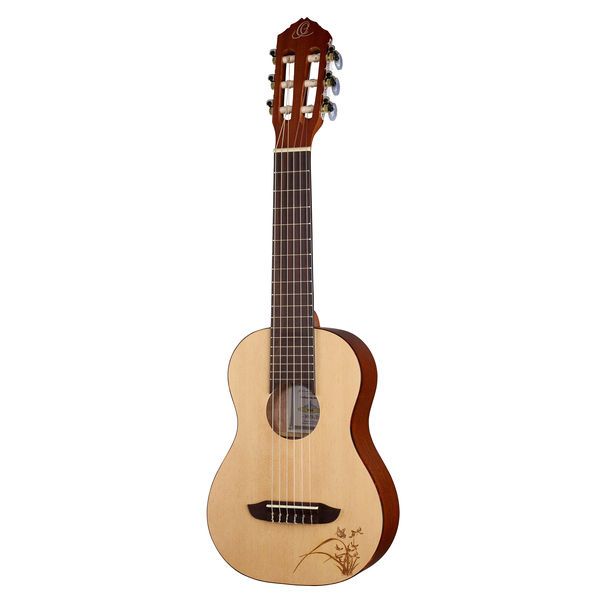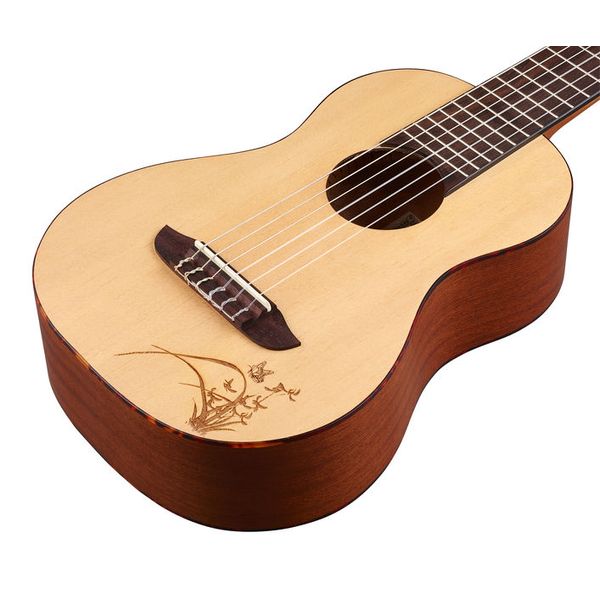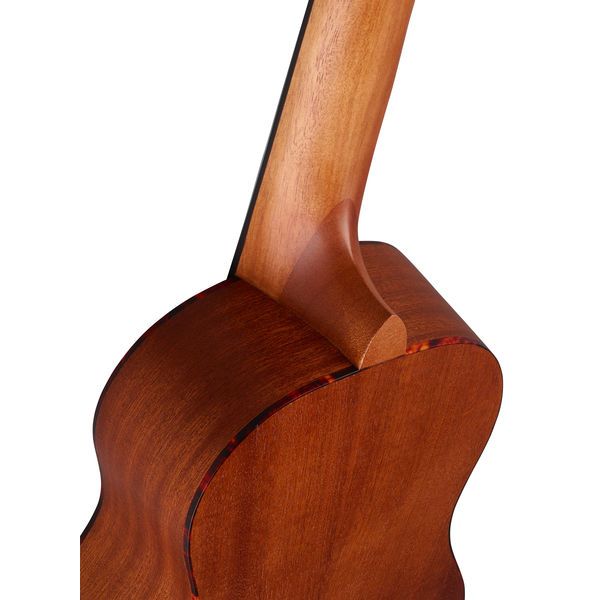Ortega RGL5 Guitarlele
Le peculiarità della chitarra classica Ortega RGL5 Guitarlele :
Top: Spruce
Back and sides: Mahogany
Neck: Mahogany
Fretboard and bridge: Sonokelin
Nut width: 47 mm
Scale: 435 mm
18 frets
Colour: Natural satin and laser engraving on the top
Original stringing D’Addario EJ27N (Art 245063)
In catalogo dal Settembre 2015
Numero di articolo 369544
Unitá incluse 1 Pezzo
Colour Natural
Top Spruce
Back and Sides Mahogany
Fretboard Rosewood
Nut width in mm 47,00 mm
Scale 435 mm
Cutaway No
Pickup System No
Case or Gigbag No
Quando scegliere una chitarra classica di tipo elettro-acustico?
Il principale difetto delle chitarre classiche, rispetto a una chitarra folk, è la bassa potenza di gioco.
La chitarra classica è ottimale per suonare da soli, in camera.
La chitarra elettro-acustica si differenzia semplicemente per l’esistenza di un microfono integrato, che permette di aumentarne il volume.
Tuttavia, bisognerà prepararsi a spendere di più.
Come scegliere la propria chitarra classica (Ortega RGL5 Guitarlele)?
Sia che tu sia un principiante o un chitarrista esperto, scegliere il tipo di chitarra ottimale che si adatta al tuo stile di gioco non è mai semplice.
La scelta della tua prima chitarra è un elemento fondamentale per un apprendimento riuscito.
Se hai deciso di privilegiare le chitarre classiche, ti presentiamo qui alcuni suggerimenti per aiutarti a orientarti.
Quanto costa una chitarra classica (Ortega RGL5 Guitarlele)?
I principianti possono iniziare con una spesa contenuta acquistando strumenti entry-level.
D’altra parte, se sei già competente, è consigliabile optare per uno strumento mid-range.
Quando acquisti la chitarra, devi anche prepararti ad acquistare accessori essenziali, a cominciare dall’accordatore e dalla custodia.
La custodia della chitarra servirà soprattutto a proteggerla dagli incidenti e dalla sporcizia per una maggiore durata.
Su quali criteri scegliere una classica (Ortega RGL5 Guitarlele)?
Con una moltitudine di modelli disponibili, scegliere una chitarra non è affatto semplice.
Molti di questi criteri sono da prendere in considerazione per effettuare la scelta giusta.
Ad esempio:
- La sua dimensione.
- Lo stile di musica.
- Il legno utilizzato nella sua costruzione.
I tipi di legno utilizzati
Queste chitarre possono essere composte da una grande varietà di legni diversi, molti dei quali più comuni degli altri.
Questo è il caso del cedro e dello spruce che compongono nella maggior parte dei casi le tavole armoniche delle chitarre.
Il cedro è preferito nella fabbricazione delle chitarre classiche ed è considerato dai musicisti. Questo legno offre un suono più complesso ed armonioso. Per lo spruce, emette un suono incisivo e chiaro.
A seconda del tipo di legno utilizzato, può produrre suoni cristallini, medi e bassi con più o meno armonici.
The rest of the body of the classical guitar, including the back and sides, has little influence on the sound produced by the musical instrument, compared to the soundboard. For these parts, luthiers mostly use rosewood or mahogany.
Rosewood wood gives warmth to the sounds while mahogany gives a brighter and more powerful sound.
Laminated or solid wood?
A first differentiation to note concerns solid wood and laminated wood. The former, resulting from a bonding of thin sheets of wood, produces a less rich and more balanced sound.
Laminated wood is found on most of the characteristics of stringed instruments including the back and sides. Compared to laminated wood guitars, solid wood guitars are a quality option that sounds more musical and has a longer lifespan.
The materials used in classical guitar construction
The wood used in the production of musical instruments greatly affects the sound that comes out of the sound box.
How to choose the size of a guitar
To play classical guitar, it is important to choose the right size.
Acoustic guitars come in five standard sizes, with musical instruments suitable for children and adults of different ages. The 4/4 model is particularly suitable for adults.
As for various types, such as:
- 1/4
- 1/2
- 3/4
- 7/8
They seem suitable for children of various age groups.
Different music styles
Like acoustic-style guitars, classical guitars are rather versatile and allow you to switch between various types of music such as blues, pop or rock. In general, classical guitars are especially recommended for classical music but also French songs, Spanish and Brazilian music, and jazz.
What defines a classical-style guitar (Ortega RGL5 Guitarlele)?
This instrument helps you gradually integrate all musical styles. In addition, nylon strings prevent finger pain, which would be the case with metal classical guitar strings.
It should be understood that this distinction in strings also affects the sound obtained. As for the neck, that of a classical guitar is wider compared to a folk-style guitar. A good part of them do not have dots on certain frets as is the case with an electric guitar.
Their shapes are generally symmetrical. Ultimately, in terms of sound, a classical guitar will produce a soft sound, suitable for playing in picking style.







